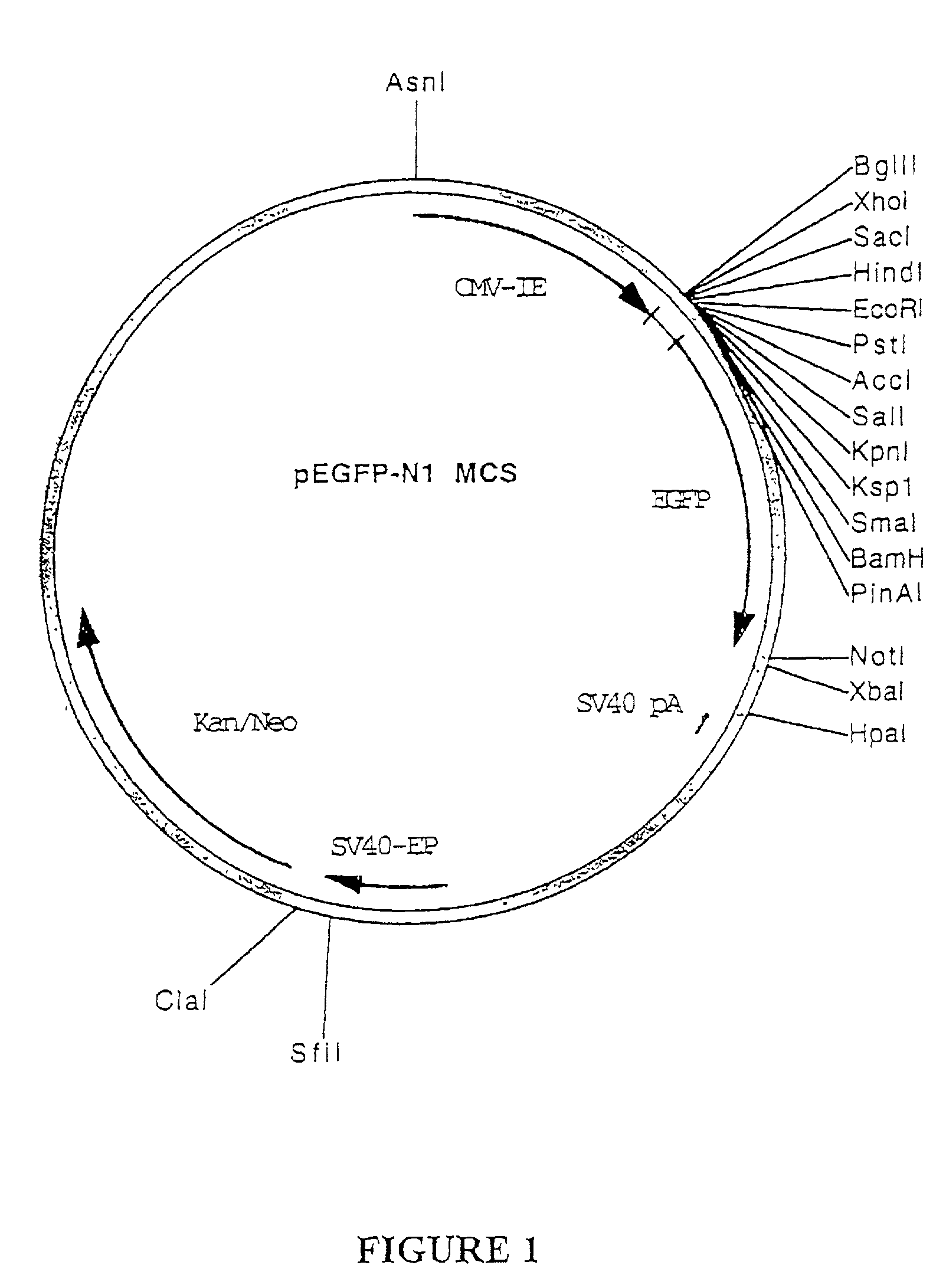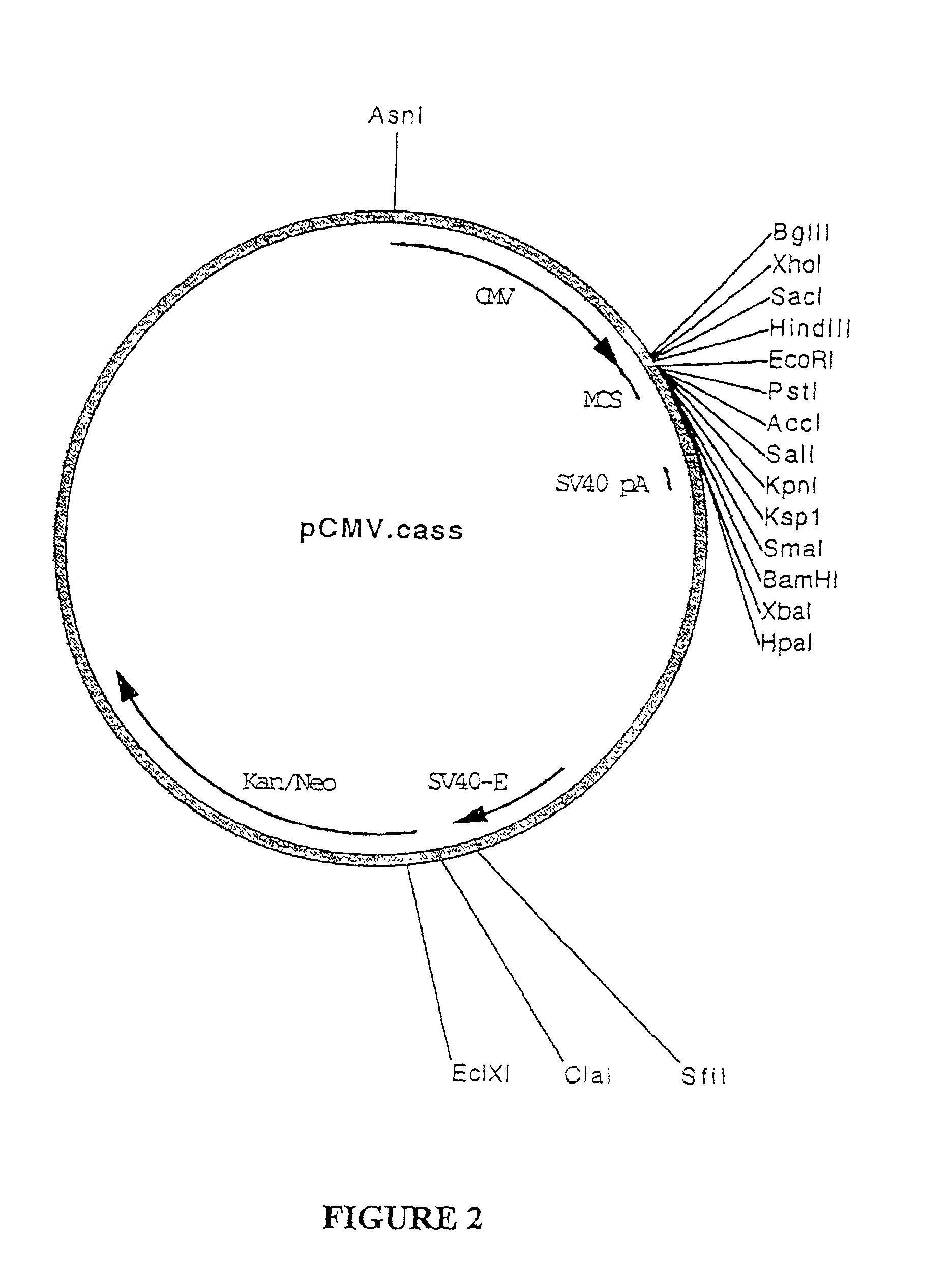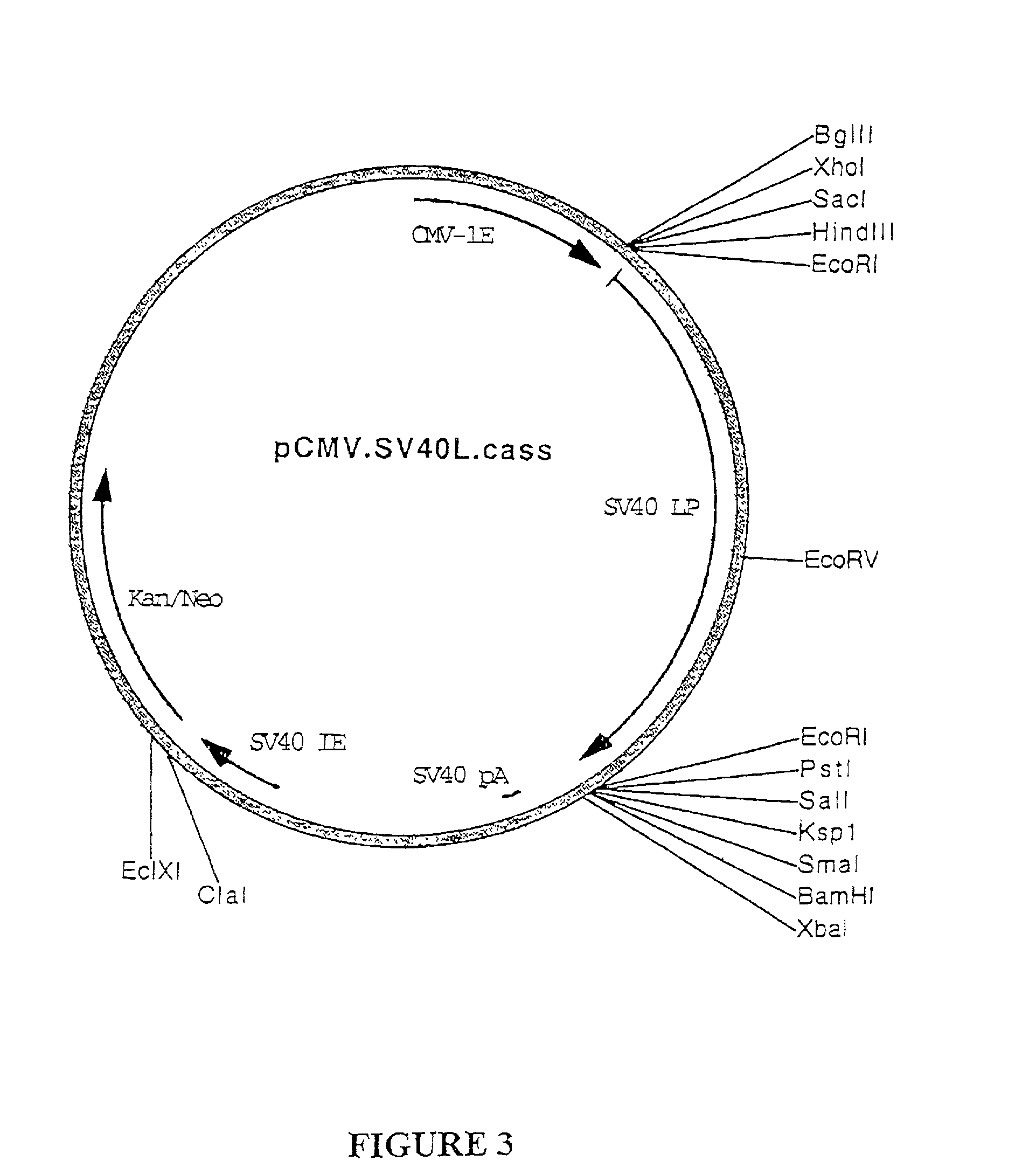Control of gene expression
a gene expression and control technology, applied in the field of gene expression control, can solve the problems of limited means, less progress in actual manipulation of gene expression to produce novel traits, and intervention may lead to a modulation of the level of eukaryotic gene expression
- Summary
- Abstract
- Description
- Claims
- Application Information
AI Technical Summary
Benefits of technology
Problems solved by technology
Method used
Image
Examples
example 2
[0274] Genetic Constructs Comprising BEV Polymerase Gene Sequences Linked to the CMV Promoter Sequence and / or the SV40L Promoter Sequence
[0275] 1. Commercial Plasmids
[0276] Plasmid pBluescriptII (SK+)
[0277] Plasmid pBluescriptII (SK+) is commercially available from Stratagene and comprises the LacZ promoter sequence and lacZ-alpha transcription terminator, with a multiple cloning site for the insertion of structural gene sequences therein. The plasmid further comprises the ColE1 and f1 origins of replication and ampicillin-resistance gene.
[0278] Plasmid pSVL
[0279] Plasmid pSVL is commercially-obtainable from Pharmacia and serves as a source of the SV40 late promoter sequence. The nucleotide sequence of pSVL is also publicly available as GenBank Accession Number U13868.
[0280] Plasmid pCR2.1
[0281] Plasmid pCR2.1 is commercially available from Invitrogen and comprises the LacZ promoter sequence and lacZ-.alpha. transcription terminator, with a cloning site for the insertion of structur...
example 3
[0346] Genetic constructs comprising the porcine .alpha.-1 ,3-galactosyltransferase (Gait) structural gene sequence or sequences operably connected to the CMV promoter sequence and / or the SV40L promoter sequence
[0347] 1. Commercial Plasmids
[0348] Plasmid pcDNA3
[0349] Plasmid pcDNA3 is commercially available from Invitrogen and comprises the CMV-lE promoter and BGHpA transcription terminator, with multiple cloning sites for the insertion of structural gene sequences there between. The plasmid further comprises the ColE1 and fl origins of replication and neomycin-resistance and ampicillin-resistance genes.
[0350] 2. Intermediate Plasmids
[0351] Plasmid pcDNA3.Galt
[0352] Plasmid pcDNA3.Galt (BresaGen Limited, South Australia, Australia; FIG. 28) is plasmid pcDNA3 (Invitrogen) and comprises the cDNA sequence encoding porcine gene alpha-1,3-galactosyltransferase (Galt) operably under the control of the CMV-lE promoter sequence such that it is capable of being expressed therefrom. To produc...
example 4
[0380] Genetic constructs comprising PVY Nia sequences operably linked to the35S promoter sequence and / or the SCBV promoter sequence
[0381] 1. Binary Vector
[0382] Plasmid pART27
[0383] Plasmid pART27 is a binary vector, specifically designed to be compatible with the pART7 expression cassette. It contains bacterial origins of replication for both E. coil and Agrobacterium tumefaciens, a spectinomycin resistance gene for bacterial selection, left and right T-DNA borders for transfer of DNA from Agrobacterium to plant cells and a kanamycin resistance cassette to permit selection of transformed plant cells. The kanamycin resistance cassette is located between the T-DNA borders, pART27 also contains a unique Notl restriction site which permits cloning of constructs prepared in vectors such as pART7 to be cloned between the T-DNA borders. Construction of pART27 is described in Gleave, AP (1992).
[0384] When cloning NotI inserts into this vector, two insert orientations can be obtained. In a...
PUM
| Property | Measurement | Unit |
|---|---|---|
| Electrical resistance | aaaaa | aaaaa |
Abstract
Description
Claims
Application Information
 Login to View More
Login to View More - R&D
- Intellectual Property
- Life Sciences
- Materials
- Tech Scout
- Unparalleled Data Quality
- Higher Quality Content
- 60% Fewer Hallucinations
Browse by: Latest US Patents, China's latest patents, Technical Efficacy Thesaurus, Application Domain, Technology Topic, Popular Technical Reports.
© 2025 PatSnap. All rights reserved.Legal|Privacy policy|Modern Slavery Act Transparency Statement|Sitemap|About US| Contact US: help@patsnap.com



